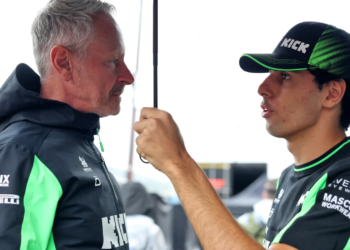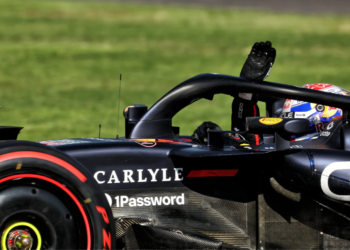Having launched with some of the most complex bodywork around the front of the sidepods, Mercedes introduced some subtle refinements for the second pre-season test by dividing areas of the bargeboard and repositioning the root of the larger turning vanes that straddle the car.
We have become familiar with the serrated bodywork Mercedes like to use to manipulate the airflow and these early changes indicate that they will once again be going down that path for 2017.
The curvature of the bargeboard (where it runs parallel to the nose before twigging 90º to sit ahead of the sidepod) causes a natural pressure gradient between the front and rear faces as the air passes over it. When this air leaves the board it will swirl into a vortex, which can be controlled by either creating downward steps (like Mercedes have done) or a gentle slope towards the trailing edge (like Ferrari). Introducing these little serrations along the top edge alters the pressure gradient, fine-tuning the vortex that is shed around the sidepod undercut and along the side of the floor.
This was combined with a reworked ‘axe head’ floor section – the part of the floor that projects forward from the car’s flanks, anchoring the bargeboards and turning vanes. Two longitudinal slots have been carved to form three lipped elements, capturing airflow passing round the bargeboards and forcing it briefly underneath the car before flipping back out and rearwards.
The micro-management of airflow has been key to Mercedes’s recent success as they can hone in on exactly how they want the flow to behave without fundamentally altering the car’s aerodynamic characteristics. It is an expensive development method though: in Brackley there is an entire team dedicated to simulating tiny changes to the CAD geometry of all the aero surfaces, all day, every day, to find fractions of performance. When it comes to the accumulation of lots of little gains to make a big one, Mercedes are arguably the kings of it at present.







Discussion about this post